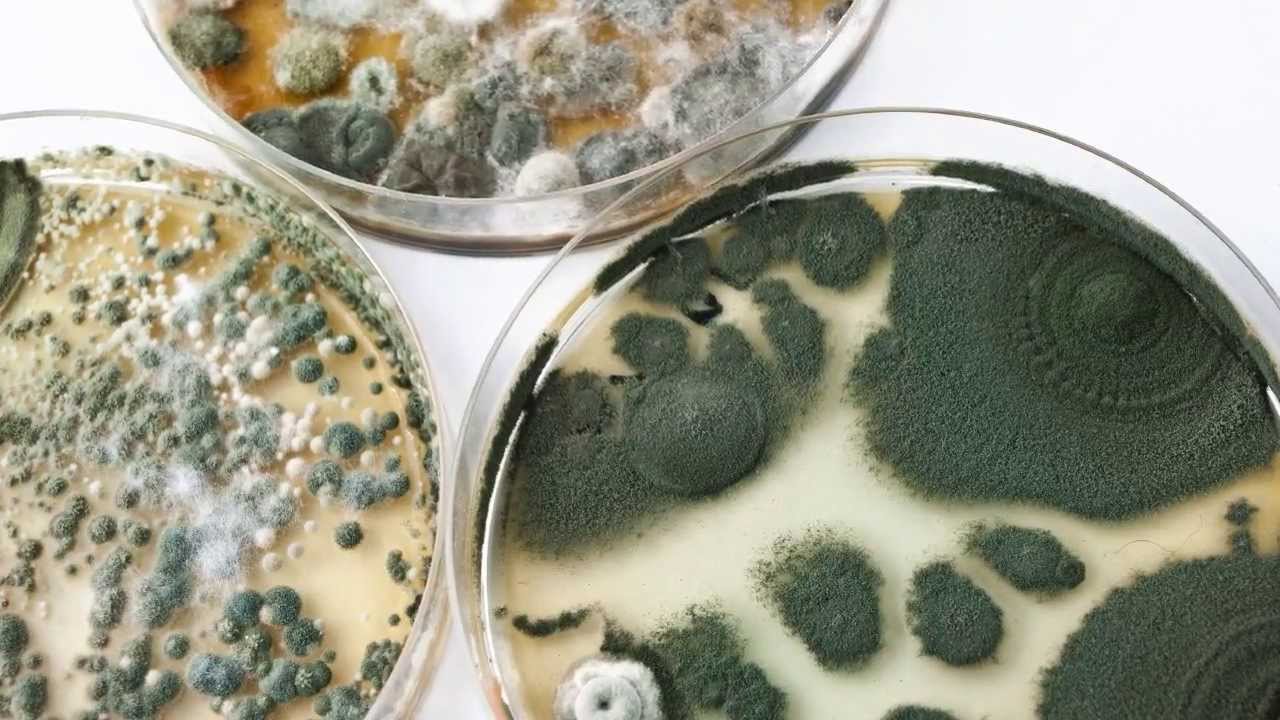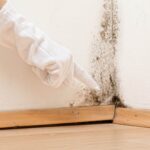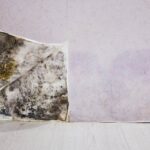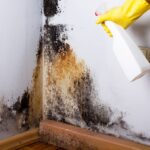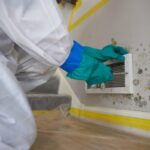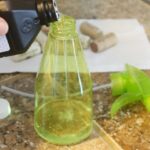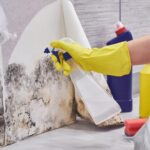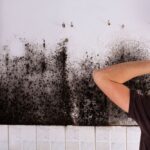There are numerous types of mold that can be found in close proximity to humans, some of which can cause harm to human health. The most harmful types of mold include Stachybotrys, Aspergillus, Penicillium, and Chaetomium.
These molds can cause a range of health issues, including respiratory problems, allergic reactions, and infections. It is important to identify and remediate mold growth in indoor environments to minimize the risks to human health.
The Most Harmful Types of Mold
Certainly, here is a list of some of the most harmful types of mold and a brief explanation of each:
- Aspergillus – This type of mold is extremely common and can be found in many indoor and outdoor environments. It can cause respiratory infections and allergic reactions in some people, and in severe cases, it can lead to chronic lung disease or even death.
- Stachybotrys – Also known as “black mold,” this type of mold is often associated with water damage and can grow on materials such as drywall and carpeting. It produces mycotoxins that can cause respiratory problems, neurological issues, and other health concerns.
- Chaetomium – This type of mold can be found in damp and humid areas such as basements, bathrooms, and attics. It can cause respiratory problems, skin irritation, and even brain damage in some cases.
- Fusarium – This type of mold is commonly found in water-damaged homes and can cause a range of health issues, including eye infections, skin infections, and even invasive infections in people with weakened immune systems.
- Penicillium – This type of mold is commonly found in indoor environments and can cause allergic reactions and respiratory problems in some people. It can also produce mycotoxins that are harmful to humans and animals.
- Cladosporium – This type of mold is commonly found in outdoor environments and can cause respiratory problems and allergic reactions in some people. It can also grow indoors and can be found in damp areas such as bathrooms and basements.
- Alternaria is a common type of mold that is found both indoors and outdoors. It thrives in damp areas such as showers, under sinks, and around windows. Alternaria produces allergens that can cause respiratory problems, especially in people with weakened immune systems. Exposure to this mold can lead to symptoms like sneezing, runny nose, and itchy eyes. Additionally, Alternaria produces mycotoxins that can cause serious health issues when inhaled or ingested. These toxins have been linked to liver and kidney damage, as well as cancer.
- Trichoderma is a genus of fungi that is found in soil, decaying wood, and other organic matter. While Trichoderma is generally not harmful to humans, some species of this mold can cause respiratory problems in people with weakened immune systems. Additionally, Trichoderma can produce allergens that cause allergic reactions in some individuals. However, Trichoderma is also used in agricultural biotechnology to control plant pathogens and reduce the need for chemical pesticides. It is also used to produce cellulose enzymes that are used in the paper and textile industries.
It is important to note that all types of mold can be harmful to some extent, and the health effects of mold exposure can vary depending on the individual and the type of mold present. If you suspect mold in your home, it is important to address the issue promptly and seek professional help if necessary.
Prevention and Remediation
If you suspect or find mold in your home, it’s important to take action to address it as soon as possible. Here are some steps you can take:
Identify the type of mold
Knowing the type of mold you’re dealing with can help you determine the best course of action. If it’s a toxic mold, it’s important to take extra precautions and seek professional help.
Contain the affected area
You want to prevent the mold from spreading to other areas of your home. Use plastic sheeting to cover doors and openings, and turn off HVAC systems.
Wear protective gear
When dealing with mold, it’s important to wear protective gear, such as gloves, goggles, and a face mask.
Remove the mold
For small areas of mold, you can use a mixture of water and detergent to scrub it away. For larger areas, or if you suspect toxic mold, it’s best to hire a professional.
Address the underlying issue
Mold thrives in moist environments, so it’s important to address any underlying moisture issues in your home, such as leaks or high humidity.
Prevent future mold growth
Once you’ve removed the mold, take steps to prevent future growth. This includes keeping your home well-ventilated, fixing any leaks promptly, and using a dehumidifier if needed.
Fix any leaks or water damage.
If there is a leaky pipe or water damage in your home, it’s important to fix it as soon as possible. This will help prevent mold from growing and spreading.
Control humidity levels.
Mold thrives in damp environments, so it’s important to keep the humidity levels in your home under control. You can use a dehumidifier or air conditioner to keep the air dry.
Clean and dry affected areas
If you find mold in your home, it’s important to clean and dry the affected areas as soon as possible. You can use a solution of bleach and water to clean the mold, but be sure to wear protective clothing and ventilate the area well.
Hire a professional
If you have a large amount of mold in your home, or if you’re not comfortable cleaning it yourself, it’s best to hire a professional mold remediation company. They have the equipment and expertise to safely remove the mold and prevent it from coming back.
Prevent future mold growth
Once you’ve removed the mold from your home, it’s important to take steps to prevent it from coming back. This includes fixing any leaks, controlling humidity levels, and regularly cleaning and inspecting your home for signs of mold.
It’s important to take the necessary steps to address the issue and prevent further growth. This can include identifying and removing the source of moisture, cleaning and sanitizing affected areas, and seeking professional help if necessary. By staying informed and proactive, you can help keep your living and working spaces safe and healthy for everyone.
The Dangers of Mold Exposure
Exposure to mold can lead to a wide range of health problems, particularly for people who are allergic to it. The symptoms of mold exposure can vary from person to person, but common symptoms include nasal congestion, coughing, wheezing, skin irritation, and eye irritation.
Some types of mold produce mycotoxins that can cause more severe health problems, including neurological problems, respiratory problems, and immune system problems. People with preexisting respiratory conditions, compromised immune systems, or other health conditions may be more susceptible to the harmful effects of mold exposure.
Additionally, prolonged exposure to mold can increase the risk of developing asthma, allergies, or other respiratory problems. It is important to address any mold growth in your home as soon as possible to reduce the risk of health problems associated with exposure.
Conclusion
In conclusion, it is essential to be aware of the dangers that mold can pose to our health, particularly the most harmful types of mold. Exposure to these types of mold can result in serious health issues, including respiratory problems, allergies, and even neurological damage.
It is crucial to take necessary precautions to prevent mold growth and seek professional help if mold is detected in your home or workplace. Remember that early detection and intervention are crucial in preventing the potential harm caused by mold exposure. By staying informed and taking action when necessary, we can help protect ourselves and our loved ones from the dangerous effects of mold.
